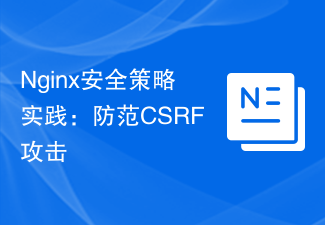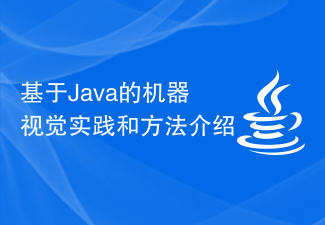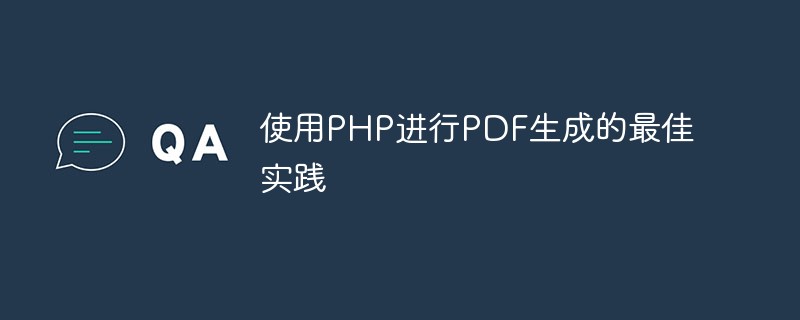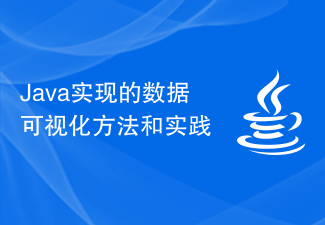With the increasing development of data analysis and processing, data visualization has become an increasingly important direction. For businesses and individuals, how to transform large amounts of data into visual forms is an extremely important skill. In this field, Java is also a mainstream visualization tool, which can help users process and display data more quickly and efficiently. This article will focus on various methods and practices for data visualization in Java.
1. Basic Java visualization tools
There are many visualization toolkits in Java, the most commonly used are JavaFX, Swing and AWT. These toolkits provide a series of rich graphical interfaces and graphical controls, which play an important role in data visualization. Below, we describe how these toolkits enable data visualization.
- JavaFX
JavaFX is a new generation graphical toolbox that is part of Java SE8. JavaFX provides a lot of graphical controls and graphical interfaces, allowing us to easily visualize data. JavaFX can implement various visualization forms such as pie charts, bar charts, stacked charts, line charts, bubble charts, scatter charts, etc., which are convenient and simple to use.
The following is a sample code for JavaFX to implement a pie chart:
import javafx.application.Application;
import javafx.collections.ObservableList;
import javafx.scene.Group;
import javafx.scene.Scene;
import javafx.scene.chart.PieChart;
import javafx.stage.Stage;
public class PieChartSample extends Application {
@Override
public void start(Stage stage) {
Scene scene = new Scene(new Group());
stage.setTitle("Pie Chart Sample");
stage.setWidth(500);
stage.setHeight(500);
ObservableList<PieChart.Data> pieChartData =
FXCollections.observableArrayList(
new PieChart.Data("Grapefruit", 13),
new PieChart.Data("Oranges", 25),
new PieChart.Data("Plums", 10),
new PieChart.Data("Pears", 22),
new PieChart.Data("Apples", 30));
final PieChart chart = new PieChart(pieChartData);
chart.setTitle("Imported Fruits");
((Group) scene.getRoot()).getChildren().add(chart);
stage.setScene(scene);
stage.show();
}
public static void main(String[] args) {
launch(args);
}
}- Swing
Swing is a GUI toolkit written in Java language that provides It has many graphical interfaces and graphic controls, making data visualization operations more convenient. JFreeChart in Swing can draw various types of charts, such as change charts, column charts, pie charts, scatter charts, etc.
The following is a sample code for Swing to implement a histogram:
import javax.swing.*;
import org.jfree.chart.*;
import org.jfree.chart.plot.*;
import org.jfree.data.category.*;
public class BarChartExample extends JFrame {
public BarChartExample() {
JFreeChart barChart = ChartFactory.createBarChart(
"Country vs GDP",
"Country",
"GDP",
createDataset(),
PlotOrientation.VERTICAL,
true,
true,
false);
ChartPanel chartPanel = new ChartPanel(barChart);
chartPanel.setPreferredSize(new java.awt.Dimension(800, 600));
getContentPane().add(chartPanel);
}
private CategoryDataset createDataset() {
final String fiat = "FIAT";
final String audi = "AUDI";
final String ford = "FORD";
final String speed = "Speed";
final String millage = "Millage";
final String userrating = "User Rating";
final String safety = "safety";
final DefaultCategoryDataset dataset
= new DefaultCategoryDataset();
dataset.addValue(1.0, fiat, speed);
dataset.addValue(3.0, fiat, userrating);
dataset.addValue(5.0, fiat, millage);
dataset.addValue(5.0, fiat, safety);
dataset.addValue(5.0, audi, speed);
dataset.addValue(6.0, audi, userrating);
dataset.addValue(10.0, audi, millage);
dataset.addValue(4.0, audi, safety);
dataset.addValue(4.0, ford, speed);
dataset.addValue(2.0, ford, userrating);
dataset.addValue(3.0, ford, millage);
dataset.addValue(6.0, ford, safety);
return dataset;
}
public static void main(String[] args) {
BarChartExample example = new BarChartExample();
example.pack();
example.setDefaultCloseOperation(JFrame.EXIT_ON_CLOSE);
example.setVisible(true);
}
}- AWT
AWT is a Java graphical user interface toolbox. AWT can be used to create various graphical user interface elements such as forms, dialog boxes, menus, etc. AWT can be considered the predecessor of Swing, lacking in performance and scalability, but can still be used for some simple graphical user interface applications. JFreeChart can also be used to draw various types of graphical interfaces in AWT.
2. The practice of Java data visualization
Data visualization implemented in Java can be used in many fields, including data analysis and display, information chart drawing, and various scientific and engineering applications. Below, we will introduce some Java data visualization practices.
- Data analysis and display
For businesses and individuals, visualizing data is very important. Because this can help better understand the meaning of the data, infer hidden data associations, and provide valuable information for decision-making. For this situation, the Swing and JavaFX toolkits provided by Java are very helpful. We can use these toolkits to draw charts, graphs, maps and other visual displays of data to better understand the connotation of the data.
- Infographic chart drawing
In data visualization, information charts are a very common form. Infographics can be used to display various forms of data, including future trends, historical trends, and more. By using JFreeChart to draw visual charts, we can display data easily. For example, we can draw a time series chart of a company's stock price in Java to understand the trends and changes in stock prices.
- Science and Engineering Applications
In the fields of science and engineering, data visualization also plays an important role. For example, Java visualization tools can be used to display simulation results in three-dimensional and two-dimensional forms for real-time visualization. This can help researchers or engineers better understand experimental results and infer the properties of models and algorithms.
3. Summary
In this article, we introduced various methods and practices for data visualization in Java language. We learned that the three graphical user interface toolboxes of JavaFX, Swing and AWT can all be used to achieve data visualization. Regardless of the field, data visualization is very important because it can help us better understand the meaning and value of data and provide strong support for decision-making in various industries.
The above is the detailed content of Data visualization methods and practices implemented in Java. For more information, please follow other related articles on the PHP Chinese website!
 Nginx安全策略实践:防范CSRF攻击Jun 10, 2023 am 10:00 AM
Nginx安全策略实践:防范CSRF攻击Jun 10, 2023 am 10:00 AM随着互联网的发展,Web应用程序已经成为我们日常生活中不可或缺的一部分。Web应用程序的开发通常涉及多个方面,例如设计、开发、运维、安全等等。其中,安全性是非常关键的,而CSRF攻击是Web应用程序中较为常见的安全漏洞之一。本文将围绕Nginx安全策略实践,介绍如何防范CSRF攻击。一、什么是CSRF攻击CSRF(Cross-siterequestfor
 PHP程序中的迭代器最佳实践Jun 06, 2023 am 08:05 AM
PHP程序中的迭代器最佳实践Jun 06, 2023 am 08:05 AMPHP程序中的迭代器最佳实践迭代器在PHP编程中是一种非常常用的设计模式。通过实现迭代器接口,我们可以遍历一个集合对象中的元素,而且还可以轻松的实现自己的迭代器对象。在PHP中,迭代器模式可以帮助我们更有效地操作数组、列表等集合对象。在本文中,我们将介绍PHP程序中迭代器的最佳实践,希望能帮助同样在迭代器应用方面工作的PHP开发人员。一、使用标准迭代器接口P
 基于Java的机器视觉实践和方法介绍Jun 18, 2023 am 11:21 AM
基于Java的机器视觉实践和方法介绍Jun 18, 2023 am 11:21 AM随着科技的不断发展,机器视觉技术在各个领域得到了广泛应用,如工业自动化、医疗诊断、安防监控等。Java作为一种流行的编程语言,其在机器视觉领域也有着重要的应用。本文将介绍基于Java的机器视觉实践和相关方法。一、Java在机器视觉中的应用Java作为一种跨平台的编程语言,具有跨操作系统、易于维护、高度可扩展等优点,对于机器视觉的应用具有一定的优越性。Java
 go-zero在微服务治理上的应用与最佳实践Jun 23, 2023 am 10:38 AM
go-zero在微服务治理上的应用与最佳实践Jun 23, 2023 am 10:38 AM作为一款轻量级的Go语言微服务框架,go-zero在微服务治理方面的应用和最佳实践已经成为了当前开发中不可忽视的重要部分。Go语言在进行分布式应用开发时,一般要使用微服务架构模式。在微服务架构中,服务之间的通信非常重要。要保证服务之间的通信的可靠性和高效性,就需要针对微服务治理进行优化。本文将探讨go-zero在微服务治理方面的应用与最佳实践,以期为开发者提
 使用PHP进行PDF生成的最佳实践May 23, 2023 am 09:02 AM
使用PHP进行PDF生成的最佳实践May 23, 2023 am 09:02 AMPDF已成为一种受欢迎的文件格式,广泛用于各种场景,包括电子书、报表和证明文件。在PHP中,可以使用多种库和工具来生成PDF文档,但是如何选择最佳实践?以下是使用PHP进行PDF生成的最佳实践:1.选择适当的库PHP中有多个PDF库可供选择,包括FPDF、TCPDF、mPDF和DOMPDF。FPDF是很早就存在的库之一,具有相当多的社区支持。TCPDF功能强
 前后端分离的PHP项目开发实践Jun 27, 2023 am 08:15 AM
前后端分离的PHP项目开发实践Jun 27, 2023 am 08:15 AM随着互联网的快速发展和数以亿计的用户日益增多,对于高质量、高性能的Web应用程序的需求也越来越大。在此背景下,前后端分离的PHP项目开发模式日益受到人们的青睐。本文将介绍前后端分离的PHP项目开发实践,包括开发流程、技术选型以及注意事项等方面的内容。一、前后端分离的概念前后端分离是指将Web应用程序的前端与后端分别开发、部署,并通过接口进行数据交互、业务逻辑
 Java实现的数据可视化方法和实践Jun 18, 2023 am 08:33 AM
Java实现的数据可视化方法和实践Jun 18, 2023 am 08:33 AM随着数据分析和处理的日益不断增长,数据可视化也成为了越来越重要的一个方向。对于企业和个人来说,如何将大量的数据转化为可视化的形式,是一项极为重要的技能。而在这个领域中,Java也是一种主流的可视化工具,它可以帮助用户更加快速、高效地进行数据处理和展示。本文将着重介绍Java实现数据可视化的各种方法和实践。一、基本的Java可视化工具Java中有很多可视化工具
 使用PHP进行数组操作的最佳实践Jun 06, 2023 am 10:30 AM
使用PHP进行数组操作的最佳实践Jun 06, 2023 am 10:30 AMPHP是一种广泛使用的服务器端脚本语言,可以通过许多不同的方式进行数组操作。本文将介绍我们编写PHP代码时的最佳实践,帮助您创建更高效、更美观、更可读的代码。1.使用数组函数而不是手动循环最好使用PHP数组函数,而不是手动循环数组来移动、操作或修改数据。PHP数组函数执行较快,具有更好的可读性和可维护性。下面是一些常用的PHP数组函数:array_push(


Hot AI Tools

Undresser.AI Undress
AI-powered app for creating realistic nude photos

AI Clothes Remover
Online AI tool for removing clothes from photos.

Undress AI Tool
Undress images for free

Clothoff.io
AI clothes remover

AI Hentai Generator
Generate AI Hentai for free.

Hot Article

Hot Tools

SublimeText3 English version
Recommended: Win version, supports code prompts!

SAP NetWeaver Server Adapter for Eclipse
Integrate Eclipse with SAP NetWeaver application server.

WebStorm Mac version
Useful JavaScript development tools

SublimeText3 Linux new version
SublimeText3 Linux latest version

MinGW - Minimalist GNU for Windows
This project is in the process of being migrated to osdn.net/projects/mingw, you can continue to follow us there. MinGW: A native Windows port of the GNU Compiler Collection (GCC), freely distributable import libraries and header files for building native Windows applications; includes extensions to the MSVC runtime to support C99 functionality. All MinGW software can run on 64-bit Windows platforms.






